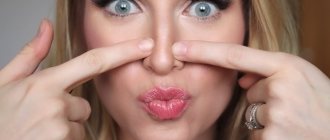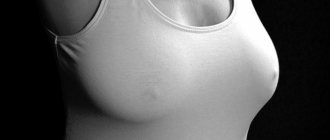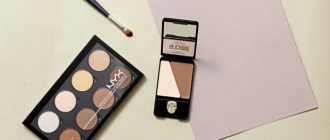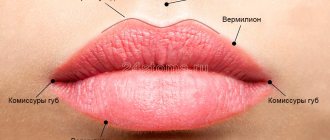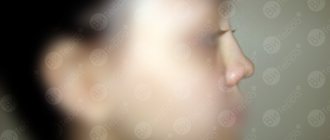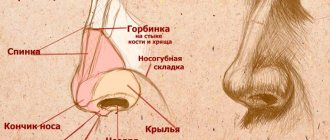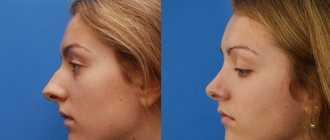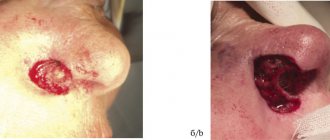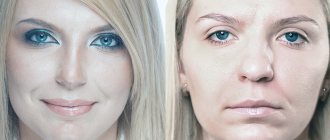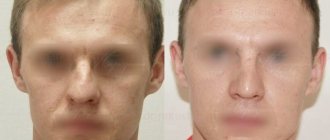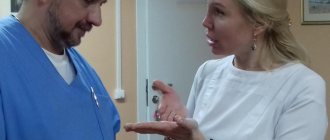Rhinoplasty
Plastic surgery of the tip of the nose
Aesthetic plastic surgery deals with the correction of external defects. One of the operations that requires special skills of surgeons due to its complexity is rhinoplasty. The purpose of surgery is to correct the nose if the patient has congenital or acquired defects or pathologies. Rhinoplasty of the nose is considered a combined operation, including several methods of procedure. Rhinoplasty surgery at the Correct Clinic is performed by highly qualified surgeons with extensive experience in plastic surgery.
Rhinoplasty with a surgeon of the highest category Sergei Arkadyevich Kharitonov
- Computer modeling of the future image.
- Equipment, tools and suture material of the latest generation.
- Safe anesthesia techniques.
- Stay in 1-2-bed wards under round-the-clock supervision of medical staff.
- Fast recovery after surgery.
- Complete absence of scars.
- Availability of all necessary licenses and certificates.
Attention, the promotion has been extended! Discounts on all types of rhinoplasty 30% until 10/15/2021 Hurry up to sign up for a free consultation!
Make an appointment
It is no coincidence that many artists begin to draw a portrait from the nose. It is its shape that determines the proportions and expressiveness of the remaining facial features. Practice shows that even a minor correction of the nose can radically improve your appearance - make your face more elegant and sophisticated. If you are unhappy with your nose, our center’s specialists are ready to fix it. Every year we perform more than 400 rhinoplasty operations, helping patients become more attractive and more confident.
Progress of the operation
Features of surgical intervention for nose surgery can vary significantly depending on the purpose of the operation.
Features of the operation:
- When plastic surgery of the tip of the nose, a local anesthetic is given, in other cases - a general one;
- The first action of the surgeon is to determine further manipulations;
- The operation begins by making an incision between the nostrils;
- with the open method of plastic surgery, the skin is separated from the cartilage, with the closed method - not;
- if transplantation is required, the area from which the cartilage tissue will be taken is selected in advance.
The duration of rhinoplasty is from 1.5 to 4 hours. As a rule, a complete nose correction takes 4 hours.
What is rhinoplasty?
Rhinoplasty is a surgical operation to change the shape and/or size of the nose. The purpose of such an intervention may be not only to eliminate a cosmetic defect, but also to restore normal breathing. Depending on which part of the nose is corrected, there are several types of rhinoplasty:
- nose tip rhinoplasty
- nostrilplasty
- rhinoseptoplasty (alignment of the nasal septum followed by correction of the shape of the nose)
- complete rhinoplasty (comprehensive correction of nasal structures without affecting the septum)
- post-traumatic plastic surgery (elimination of deformities after injuries)
Rhinoplasty of the nose, which involves correcting the results of a previous operation, is called secondary or revision.
Types of surgery
Rhinoplasty of the nose in Moscow at the Correct Clinic is performed by highly qualified plastic surgeons. Specialists use modern types of surgery for detailed or complete rhinoplasty.
There are two main types of access operations.
- Open. Plastic surgery is carried out by gaining access through an incision made from the outside along the nasal septum. The advantage is free access, allowing the implementation of procedures of any complexity. However, after open rhinoplasty, a noticeable scar remains.
- Closed. Access to the surgical site is obtained by making incisions in the nasal cavity. The advantages include the absence of scars, quick recovery and less trauma. But the closed type of plastic surgery can be used to correct not all defects.
If rhinoplasty of the nasal bones is necessary, the open approach is most often used. For example, the nasal septum is corrected. When correcting the lateral wings of the nose, you can use a closed type of operation.
In what cases can we definitely help you?
- A long nose
- Wide nasal bridge
- Excessively large or small nose
- Nose axis displacement
- Split tip of the nose
- Hooked, pointed or wide tip
- Saddle nose shape
- Humpback
- Large nostrils
- Asymmetry of the wings of the nose
- Deformation of the nasal septum
- Fractures of the nasal bones
Where it all begins: how do we prepare patients for rhinoplasty?
Consultation
At your initial appointment, you will meet rhinoplasty surgeon Sergei Arkadyevich Kharitonov and discuss all your concerns. The doctor will examine the condition of the tissues, the shape of the nose and ask you to clarify what exactly and how much you want to change. The degree of defects is determined using special measurements, the results of which are compared with the average statistical parameters. Based on your wishes and analysis of facial proportions, the doctor will suggest the optimal correction technique.
Computer modelling
At your request, the surgeon can design the future image on a computer. To do this, he will take several photographs of your face in front and profile, then, using a special program, he will make the expected changes: he will remove excess, straighten unevenness, and correct the contours of the nose.
Making corrections on a computer is much easier than working with living tissue. Therefore, the sketch you see on the screen will most likely differ from the actual result of the operation. However, it will serve as a kind of “guideline” for the doctor. By embodying an imaginary image in a photo, you and the doctor will be sure that you understood each other correctly.
At the end of the appointment, the surgeon will announce the exact cost of the operation and tell you about all the nuances of its implementation.
Survey
After you confirm the decision to undergo rhinoplasty, you will be prescribed a set of necessary diagnostic procedures:
- blood tests for HIV, hepatitis, syphilis
- Blood group and Rh factor tests
- general urine and blood tests
- blood chemistry
- rhinomanometry (study of nasal breathing function)
- ECG
Most of the studies are performed in our clinic and are already included in the price of the correction.
On the eve of the operation, you will sign a formal contract listing all the services that we undertake to provide.
Sign up for a consultation
Preparation
If the plastic surgeon agrees to perform rhinoplasty, you will need to follow all recommendations during the preparation stage. Violating the doctor's instructions may lead to difficulties during the operation.
Preparation for surgery:
- undergoing a full diagnosis;
- consultation with an anesthesiologist to select an anesthesia method and drug;
- taking any herbal-based drugs and products that have a blood-thinning effect several days before surgery;
- stop smoking and drinking alcohol 2–4 weeks before surgery;
- compliance with proper nutrition rules for 2 weeks;
- 8 hours before the procedure you need to exclude any food and intake of large amounts of liquid.
Depending on the method used to perform a circular or partial facelift in the clinic, there may be separate recommendations.
How is the operation performed?
A few days before rhinoplasty, the anesthesiologist will review your test results to rule out possible contraindications to the operation. The doctor will also be interested in your “medical history”: what illnesses you have, what medications you are taking, and whether you have had anesthesia before.
On the day of your correction, you will be asked to come to the clinic on an empty stomach. The last meal should take place the night before. This requirement is an absolute necessity and the most important condition for safe surgical treatment.
You will be accommodated in a comfortable single or double room, equipped according to European standards, with a climate control system and 24-hour communication with staff. Immediately before the procedure, you will be visited again by the anesthesiologist for a follow-up examination.
The operation is performed under general anesthesia (or otherwise, in a state of “medicated sleep”). Our center uses modern sedatives, which are quickly eliminated from the body and do not cause long-term side effects.
Depending on the specifics of the case, manipulations are performed open or closed. With closed rhinoplasty, the surgeon corrects the shape of the nose from the inside - through small incisions in the nostrils. When open, it cuts the middle part of the nose and lifts all the soft tissues. After the correction is completed, tampons are installed in the nasal passages, and a special fixing splint is applied to the nose, which is made individually for each patient.
The duration of the operation is 1-2 hours. From the operating room you will be transported to the “wake-up” room, where your condition will be monitored by a staff anesthesiologist-resuscitator for several hours. Registered nurses will monitor your condition 24 hours a day throughout your hospital stay.
Methods of modern rhinoplasty
During a consultation at the Clinic, a plastic surgeon conducts an examination in order not only to determine the correction zone, but also all the features of the upcoming operation. There are quite a few types of rhinoplasty, depending on what defects need to be eliminated, certain methods of surgery are used.
Modern methods of rhinoplasty:
- Augmentation. Recommended for revision rhinoplasty to enlarge the nasal skeleton.
- Grafting. A method for increasing cartilage tissue in the correction zone with the process of transplanting the patient’s own tissues.
- Reconstruction. Used when it is necessary to change defects that have arisen after primary rhinoplasty.
The Correct Clinic uses two methods of performing rhinoplasty surgery: instrumental and laser. The use of a laser has the advantage of almost complete absence of bleeding, minimal trauma and the absence of noticeable scars. But not all manipulations to correct defects can be performed using a laser, so the instrumental method still remains predominant in rhinoplasty.
After rhinoplasty: recovery by day
Immediately after surgery, swelling and bruising appear in the nose area and under the eyes. You will feel some pain for a few days, and your doctor will prescribe mild analgesics to relieve it.
If there are no complications, you will be discharged home on the 2nd day with the condition of coming for dressing changes. Tampons are removed 2-3 days after rhinoplasty, the fixation splint is removed on the 5-14th. Hemorrhages and swelling finally disappear by the end of 2 weeks.
During the rehabilitation period, temporary restrictions are imposed on lifestyle. We recommend you:
- no smoking
- sleep with the head of the bed raised
- avoid heavy physical activity
Postoperative period
Recovery from rhinoplasty takes much longer than other types of facial plastic surgery. Full recovery is possible no earlier than six months later.
Recommendations:
- In the first 10 days, the patient needs to walk with a plaster cast and constantly insert cotton pompoms into the nose. During this period, there are breathing problems, pain in the surgical area may occur, and severe swelling of the face may occur. After 2 weeks, the cast and stitches are removed. Normally, symptoms should then disappear within 2-3 days.
- You should not wash or bathe with hot water, and limit exposure to moist hot steam on the respiratory tract (for example, in a sauna).
- In places with a lot of dust or other particles, wear a mask.
- Avoid physical activity and stress.
- You need to drink a lot of water for good functioning of the urinary system and rapid elimination of edema.
- When lying down, when resting and during sleep, you should place 2-3 pillows under your head.
- You should stop smoking and drinking even small amounts of alcohol.
If there are contraindications that can be treated, the patient must undergo the necessary therapy and re-visit a plastic surgeon. For other indications, nose surgery should not be performed.
Photos before and after rhinoplasty
Comments from Dr. Kharitonov:
Dr. Kharitonov's comments: A typical Caucasian nose is a hump, a wide, overhanging tip of the nose, and excess length of the nose. Closed rhinoplasty was performed, all the listed defects were eliminated, and although only 10 days have passed, swelling and bruising still persist, but the shape of the nose is exactly what the patient wanted.
FAQ. Answered by Dr. Kharitonov S.A.
1. What time of year is it best to perform the operation?
Rhinoplasty can be done at any time of the year. Weather conditions do not affect the results of correction and the duration of rehabilitation.
2. How many days after rhinoplasty can I go to work?
Most patients return to work within 7-8 days. The maximum period of incapacity for work is 2 weeks.
3. I wear glasses. Will this interfere with recovery after surgery?
The temple of glasses can deform the bridge of the nose. To avoid this, we recommend using contact lenses for the first 4-6 weeks after surgery.
4. When will the nose after rhinoplasty take its final “new” shape?
Tissue healing continues for 4-6 months, so the final results are assessed after this time.
5. Which is better: non-surgical or surgical rhinoplasty? Do you perform injection nose reshaping?
Non-surgical rhinoplasty involves the introduction of special fillers into the soft tissues of the nose. This technique allows you to correct minor defects, but is not able to significantly change the shape of the nose. In addition, it gives a very short-term result - after 6-8 months. The filler is completely absorbed and correction has to be done again. Therefore, in our practice we prefer to use only the surgical technique - as it is more reliable and durable.
How much does rhinoplasty cost?
The price of rhinoplasty depends on the extent of the intervention. Correction of the tip of the nose is the cheapest, post-traumatic rhinoplasty is more expensive. The cost of the service includes:
- specialist consultations before and after surgery
- anesthesia
- nose job
- consumables and dressings
- hospital stay (food and care)
| Rhinoplasty 1 category of complexity | 220,000 rub. from 160,000 rub. |
| Rhinoplasty 2nd category of complexity | 250,000 rub. from 190,000 rub. |
| Complete rhinoseptoplasty (with correction of the nasal septum) 1 category of complexity | 270,000 rub. from 220,000 rub. |
| Complete rhinoseptoplasty (with correction of the nasal septum) category 2 of complexity | 310,000 rub. from 260,000 rub. |
| Secondary rhinoplasty 1 category of complexity | 350,000 rub. from 300,000 rub. |
| Secondary rhinoplasty 2nd category of complexity | RUB 370,000 from 320,000 rub. |
| Post-traumatic rhinoplasty 1 category of complexity | 350,000 rub. from 300,000 rub. |
| Post-traumatic rhinoplasty 2nd category of complexity | 360,000 rub. from 310,000 rub. |
Often, to harmonize the image, the patient is shown not only rhinoplasty, but also:
- mentoplasty (chin correction using an implant)
- malarplasty (enlargement of cheekbones using implants)
- removal of Bisha lumps
- laser facial liposuction
- breast surgery
Plastic surgery for nose reduction
Operations are performed from the age of 18. The recommended upper age limit is 40 years. The following operations are carried out:
- tip reduction;
- removal of the hump;
- narrowing of the back;
- reduction in the volume and width of the wings;
- reducing the height of the bridge of the nose;
- length reduction.
Usually, before rhinoplasty, 3D computer modeling is performed so that the patient knows in advance what he will look like. This also makes it possible to make changes to initial wishes and choose the optimal intervention technique.
Operations are done in different ways, here are some examples:
- Reducing the width. Such an operation may include correction of the tip and back or just the bridge of the nose. Radical rhinoplasty is an osteotomy, that is, working with bone tissue - cutting, redirecting, displacement, fixation. All this allows you to narrow the back. Another option is to narrow the bridge of the nose using a combination of osteotomy and cartilage transplantation. It is also possible to narrow the bridge of the nose with cartilage transplantation alone. The material for the operation is taken from the ribs and given the desired shape.
- Correction of the “potato”, that is, complete remodeling of the tip. If the nose is too large due to the widely spaced wings, then they are pulled together with special threads. If the inner walls are too large, then excess tissue is first removed and then stitched. When there is too thick skin, correction is done by eliminating excess cartilage, while correcting the wings.
- Reducing the wings. It is done by placing special sutures on the lower part of the columella, followed by fastening the wings. Excess skin is excised. If the wings are excessively large, wedge-shaped cuts are made at the base on the side parts, and then they are sewn together. This reduces not only the size of the wings, but also the size of the nostrils.
- Reducing length. The ideal ratio of the length of the back to the distance from the tip to the base is 3 to 1. The operation can be performed in two ways. In the first case, the lateral cartilages and the lower part of the septum are cut off. After this, the seam is pulled to the middle of the edge. If there is a large disproportion, the second version of the operation is performed. In the area of the septum, the cartilage is reduced, thereby achieving consistency in shape and size.
! See also More about rhinoplasty: choosing a method, before and after results
